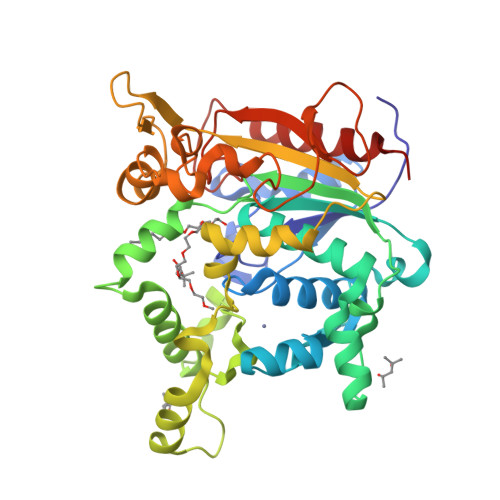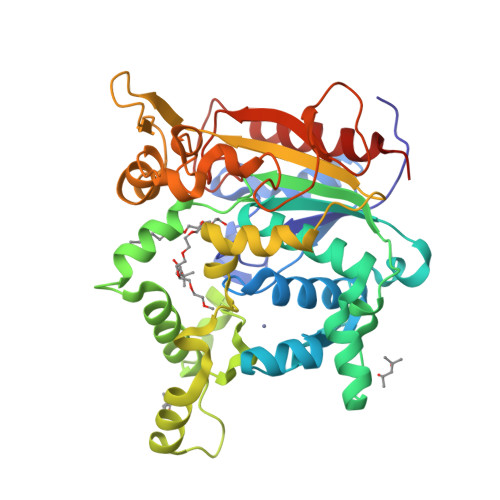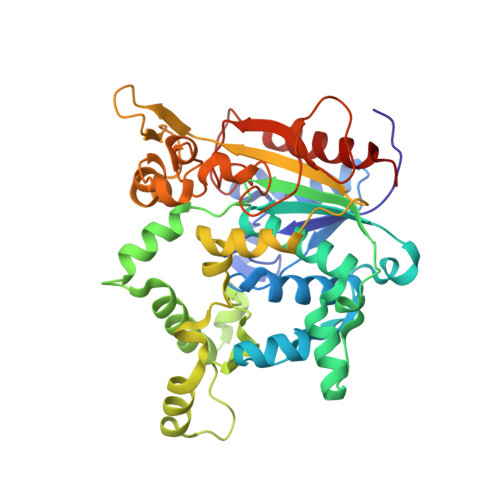Probing the roles of two tryptophans surrounding the unique zinc coordination site in lipase family I.5.
Timucin, E., Cousido-Siah, A., Mitschler, A., Podjarny, A., Sezerman, O.U.(2016) Proteins 84: 129-142
- PubMed: 26573720
- DOI: https://doi.org/10.1002/prot.24961
- Primary Citation of Related Structures:
5CE5 - PubMed Abstract:
A unique zinc domain found in all of the identified members of the lipase family I.5 is surrounded by two conserved tryptophans (W61 and W212). In this study, we investigated the role of these hydrophobic residues in thermostability and thermoactivity of the lipase from Bacillus thermocatenulatus (BTL2) taken as the representative of the family. Circular dichroism spectroscopy revealed that the secondary structure of BTL2 is conserved by the tryptophan mutations (W61A, W212A, and W61A/W212A), and that W61 is located in a more rigid and less solvent exposed region than is W212. Thermal denaturation and optimal activity analyses pointed out that zinc induces thermostability and thermoactivity of BTL2, in which both tryptophans W61 and W212 play contributing roles. Molecular explanations describing the roles of these tryptophans were pursued by X-ray crystallography of the open form of the W61A mutant and molecular dynamics simulations which highlighted a critical function for W212 in zinc binding to the coordination site. This study reflects the potential use of hydrophobic amino acids in vicinity of metal coordination sites in lipase biocatalysts design.
Organizational Affiliation:
Faculty of Engineering and Natural Sciences, Molecular Biology, Genetics and Bioengineering, Sabanci University, Istanbul, 34956, Turkey.























